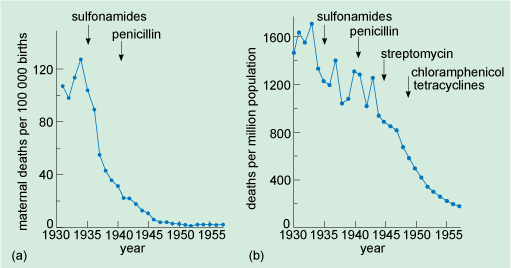4 Modern times
Since their introduction in the 1930s, antibiotics have saved millions of lives (Figure 3). Once-deadly diseases such as pneumonia and TB are now treatable and everyday infections and minor injuries are no longer potentially life-threatening.

Antibiotics are used extensively in medicine, for example to improve the survival rates of transplant and cancer patients, or for
Unfortunately, antibiotics are no longer the ‘magic bullets’ they once were. Our over-reliance on these drugs to prevent and/or treat a range of infections in both humans and animals, and for multiple other purposes, has left many antibiotics powerless as bacteria become resistant to them.
Antibiotic resistance can develop naturally in bacteria. However, the widespread use of antibiotics increases the selective pressure on bacteria to adapt and survive – that is, to develop resistance. You will learn more about this Weeks 4 and 5.
It is no coincidence that as antibiotic use has risen, so too has antibiotic resistance. For example, between 2000 and 2010, total global antibiotic consumption increased by over 30%, although there were country and regional variations (CDDEP, 2015).
